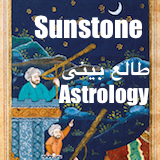The New Yorker:
Seventy miles southwest of Nairobi, the Loita Hills climb toward the sky from the red stone cleft of the Great Rift Valley. Situated beside the Serengeti and the Maasai Mara, the Loitas provide a vital watershed for migratory animals on the plains below. Forest pigs, bushbuck, black-and-white colobus monkeys, leopards, and Cape buffalo find refuge there, along with elephants that come to graze when the plains are dry. The Loita forest, one of Kenya’s last surviving stands of old-growth cedar, is sacred to the Maasai people, who call it Naimina Enkiyio—the Forest of the Lost Child, after the legend of a girl who followed wayward calves into the trees and never returned. Some twenty-five thousand Maasai live in settlements scattered through the lower valleys, where they herd goats and cows in sweeping meadows reminiscent of the Rocky Mountain foothills. The Loitas, rich in medicinal herbs and plants, are an irreplaceable resource for the laibon, the spiritual leaders of the Maasai.
Last fall, a laibon named Parmuat Koikai spent several days guiding Paula Kahumbu, a Kenyan conservationist, around the Loitas. Parmuat, a lithe man of fifty-five with a shaved head and drooping holes pierced in his earlobes, wore a traditional red shuka cloth and carried a rungu, a short club that Maasai warriors use for hunting. Kahumbu, though, was mostly interested in his defense of the local animals.
Kahumbu had come to the Loitas to shoot an episode of “Wildlife Warriors,” a popular television show in which she travels to wild places and meets Kenyans working to save endangered animals. An ecologist who has turned to storytelling, Kahumbu believes that one of the biggest threats to the country’s wildlife is that most of its citizens don’t see themselves as stakeholders in conservation efforts. “The problem is that Kenya is losing its wilderness, and conservation is not something Black Kenyans do—it’s a white thing,” she told me recently. The goal of her show, she explained, is “to have people of color talking about animals, handling them, and expressing compassion for wildlife.”
Go to link










Comments